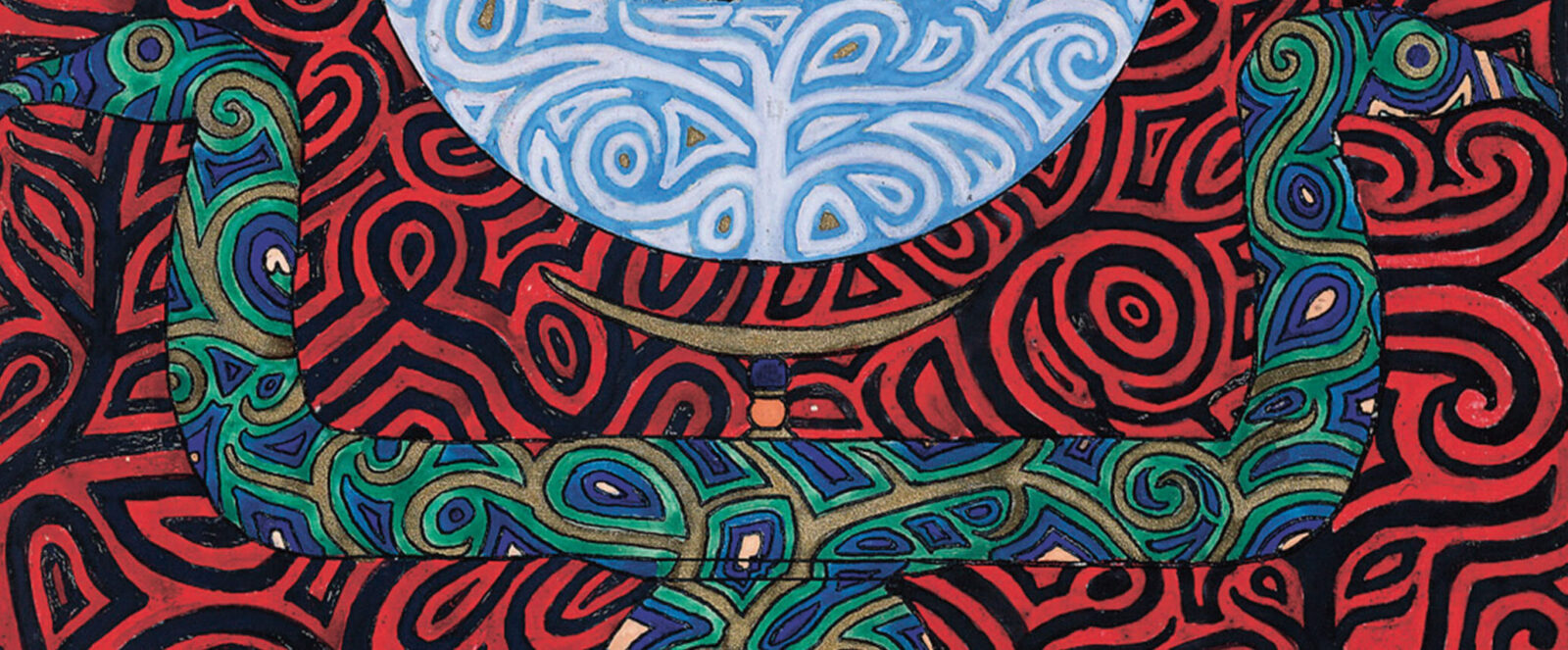More than two-thirds of the large, red, leather-bound manuscript’s pages are filled with Jung’s brightly hued and striking graphic forms paired with his thoughts written in a beautiful, illuminated style. Jung was fascinated by the mandala—an artistic representation of the inner and outer cosmos used in Tibetan Buddhism to help practitioners reach enlightenment—and used mandala structures in a number of his own works. Jung’s first known mandala-like work, Systema mundi totius (1916), is on view in the exhibition.
Created between 1914 and 1930, the Red Book has never before been seen in public, outside the circle of Jung’s family and very close friends. Alongside the 95-year-old volume are a number of oil, chalk, and tempera paintings and preparatory sketches related to it and other original manuscripts, including the Black Books, which contain ideas and fantasies leading up to the Red Book.
The works of art and archival materials included in The Red Book of C. G. Jung are on loan from the Foundation for the Works of C. G. Jung, the Jung family private archive, and private collections. W. W. Norton & Company’s publication is edited by Dr. Sonu Shamdasani, general editor of the Philemon Foundation and Philemon Professor in Jung History at the Wellcome Trust Centre for the History of Medicine at University College, London. The Red Book is one of the volumes of the Philemon Series, sponsored by the Philemon Foundation.
